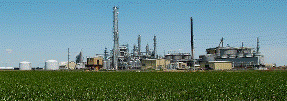Agricultural and Biological Systems Engineering, Department of

Adam Liska Papers
Document Type
Article
Date of this Version
4-2014
Citation
Published in Journal of Cleaner Production 75 (2014), pp. 31–39; doi: 10.1016/j.jclepro.2014.03.087
Abstract
Beef cattle feedlots are estimated to contribute 26% of U.S. agricultural greenhouse gas (GHG) emissions, and future climate change policy could target reducing these emissions. Life cycle assessment (LCA) of GHG emissions from U.S. grain-fed beef cattle was conducted based on industry statistics and previous studies to identify the main sources of uncertainty in these estimations. Uncertainty associated with GHG emissions from indirect land use change, pasture soil emissions (e.g. soil carbon sequestration), enteric fermentation from cattle on pasture, and methane emissions from feedlot manure, respectively, contributed the most variability to life cycle GHG emissions from beef production. Feeding of coproducts from ethanol production was estimated to reduce life cycle emissions by 1.7%, but could increase emissions by 0.6–2.0% with higher feeding rates. Monte Carlo simulation found a range of life cycle emissions from 2.52 to 9.58 kg CO2 per kg live weight (5th and 95th percentiles), with a calculated average of 8.14, which is between recent estimates. Current methods used by the U.S. Environmental Protection Agency (EPA) associated with beef production in feedlots were found to account for only 3–20% of life cycle GHG emissions.
Includes Supplementary Information/Appendix A.
Included in
Animal Sciences Commons, Atmospheric Sciences Commons, Bioresource and Agricultural Engineering Commons, Climate Commons, Oil, Gas, and Energy Commons, Other Earth Sciences Commons


Comments
Copyright © 2014 Elsevier Ltd. Used by permission.